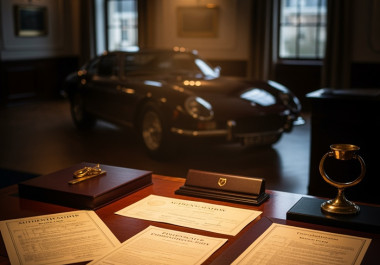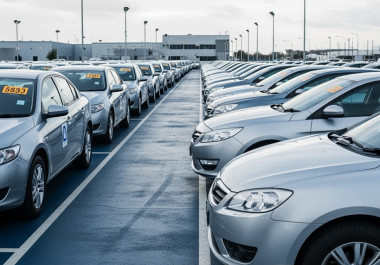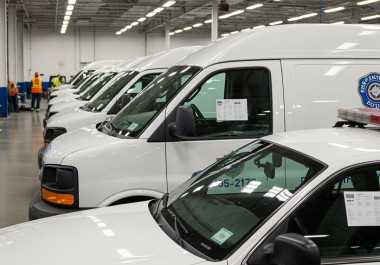Getting your Auction Reserve Price right is the difference between a confident sale and a car that circles the paddock without a bid to match. It’s your safety net, but it’s also a signal to buyers that you know the market. Set it with care, and your Auction Pricing Strategy becomes a reliable engine rather than a guessing game.
What an Auction Reserve Price Really Does
Your reserve is the minimum amount you’ll accept for the vehicle. It protects you from letting a good motor go for less than its worth, and it helps focus serious bidders. Too high and you throttle demand. Too low and you leave money on the table. A realistic Auction Reserve Price strikes the balance.
I once watched a tidy estate car stall under the lights because its reserve was miles above comparable results. Two weeks later, the seller adjusted to the data, re-listed with better photos, and it sailed past the new figure. Lesson learned: the right reserve turns interest into action.
Why “Realistic” Beats “Optimistic”
A fair reserve does three big jobs:
-
Secures fair value - you’re protected from bargain-basement outcomes.
-
Builds buyer confidence - sensible parameters attract serious bidders.
-
Supports your strategy - it aligns with your wider Auction Pricing Strategy on timing, demand, and presentation.
Think of it like setting tyre pressures before qualifying. Too much or too little and you’ll struggle. Get it right and the car grips when it counts.
Factors That Shape a Smart Reserve
1) Know the Market Value
Start with evidence, not instinct. Check recent results for similar models, trim, mileage, and condition. Browse all current vehicle auctions to see live interest bands and real-world pricing behaviour.
2) Account for Fees and Prep Costs
List all expenses - entry fees, buyer’s fee impacts, detailing, minor fixes, fresh MOT. Your Auction Reserve Price should still deliver your target net after these costs.
3) Gauge Demand
High-demand models or seasons can support a slightly firmer figure. In a slower patch, sharpen the reserve to entice competition.
4) Time it Right
Seasonality matters. Family SUVs often perform well before winter, convertibles in spring and summer. Align your Auction Pricing Strategy with when bidders want what you’re selling.
A Practical, Repeatable Method
Step 1: Gather the Facts
-
Recent auction comps - same model, year, mileage, condition.
-
Independent valuations - use multiple tools to triangulate.
-
Professional input - lean on auction specialists for live insights.
Step 2: Calculate Your Bottom Line
What’s the absolute minimum you’ll accept after all costs? That’s your floor.
Step 3: Add a Realistic Buffer
Set the Auction Reserve Price just above your floor to allow movement while keeping protection.
Step 4: Sense-Check Against the Market
Compare your figure to recent results and active listings on RAW2K Online Vehicle Auctions. If your reserve looks like an outlier, refine it.
Step 5: Be Ready to Adjust
If early interest is thin, consider a small, data-backed adjustment. Flexibility is a feature, not a flaw.
Real-World Examples From the Trade
-
South East business owner: Set the reserve on gut feel. Bidding stalled. After reviewing comps and tightening presentation, he reset the figure and achieved a clean sale.
-
West Midlands start-up: Built a data-led Auction Pricing Strategy, priced to the market, and saw lively competition push past reserve within minutes.
Different cars, same principle: research plus realism wins.
Expert Tips That Move the Needle
-
Know your car inside out - service history, options, recent maintenance, tyres, brakes. Sharp details justify strong bids.
-
Invest in presentation - professional-level photos and a tidy listing lift perceived value.
-
Use seasonal leverage - align model type with peak buyer interest.
-
Ask for guidance - feel free to get in touch with the RAW2K team for reserve-setting advice grounded in live marketplace data.
-
Make registration easy - point serious buyers to register and start bidding so momentum isn’t lost.
Common Pitfalls to Avoid
-
Overestimating worth - emotional pricing is expensive. Let the data lead.
-
Ignoring fees - a strong hammer price can still disappoint if costs weren’t factored in.
-
Rigidity - an inflexible reserve can block a fair deal.
-
Thin research - one valuation tool isn’t a strategy. Use several, and check fresh auction comps.
A Simple Checklist You Can Reuse
-
Specs and history compiled - VIN, mileage, options, service folder.
-
Market comps recorded - at least 3 recent like-for-like results.
-
Costs listed - entry, prep, logistics, potential buyer fees impact.
-
Floor calculated - your true net minimum.
-
Reserve set with buffer - above floor, still market-realistic.
-
Monitor and adapt - watch interest and adjust if justified.
Quick Anecdote From the Ramps
Years ago, a tidy diesel saloon came in with impeccable stamps but tired photos and an ambitious reserve. We gave it a proper clean, shot it in clear daylight, and trimmed the reserve to the heart of the comp range. It hammered well above the revised figure. Same car, smarter Auction Pricing Strategy.
Where RAW2K Fits In
A sound reserve is easier when you’re selling where buyers are already looking. You can explore our online car auctions to see live demand patterns, pricing bands, and how presentation shapes results. If you’re weighing up timing or reserve options, feel free to get in touch with the RAW2K team for practical, data-led guidance.
Final Thoughts
A realistic Auction Reserve Price turns caution into confidence. Build it with facts, season it with timing, and keep it flexible enough to respond to interest. Pair that with a tidy listing and a clear Auction Pricing Strategy, and you give your vehicle every chance to sell cleanly and fairly.
And if you’re ready to see how similar motors are performing right now, browse all current vehicle auctions and take your cues from real bids in the wild.




